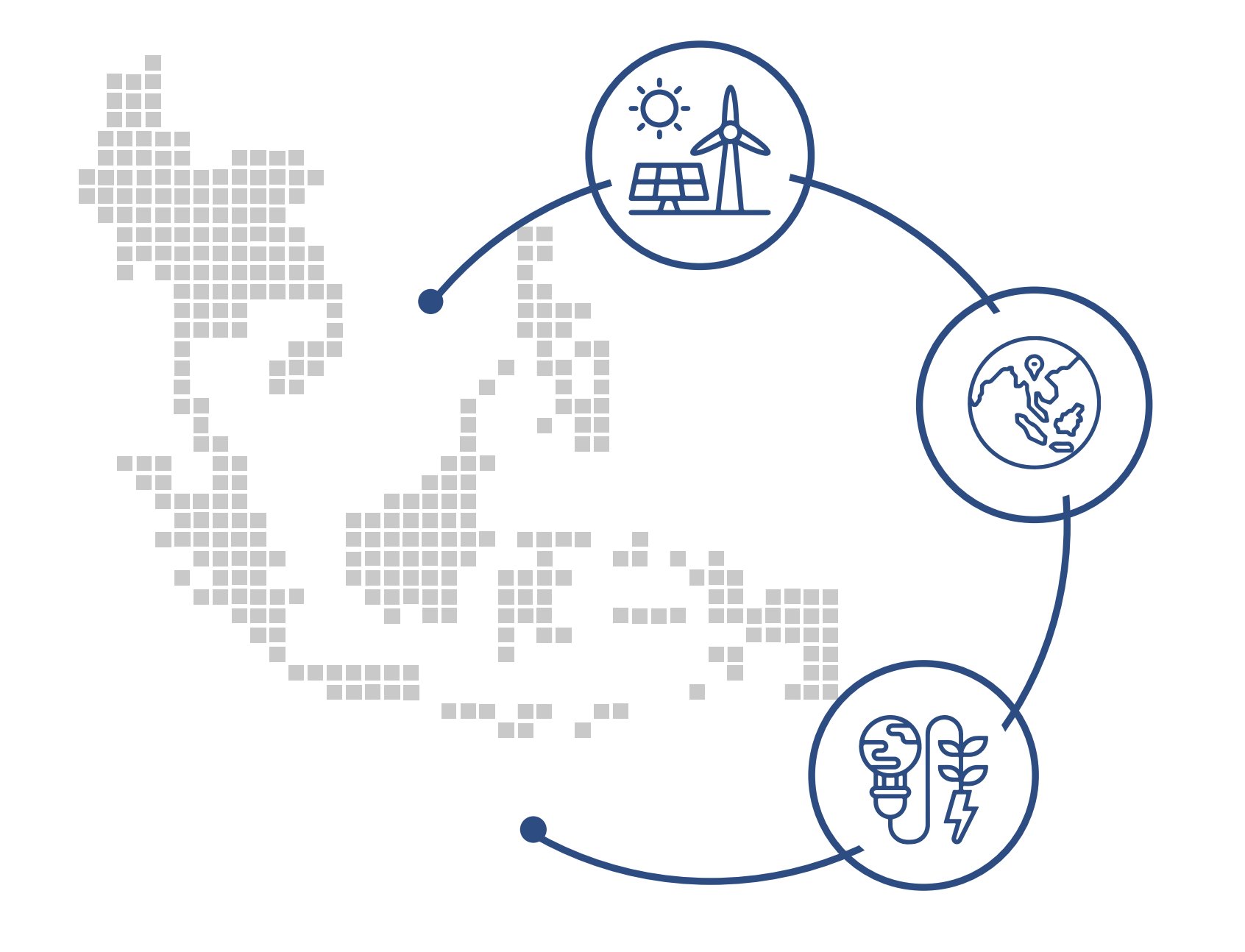Background
Colombia’s ecosystem is the second most bio-diverse in the world, and comprises the Amazon tropical rainforest, deserts to the north, mountains and a coastal region. The Government of Colombia has taken several measures to protect and conserve the country’s natural resources. Colombia was among the first countries in the region to establish environmental administration along watershed boundaries, introduce a system of pollution taxes, require environmental impact assessments for large construction projects and institutionalize legal actions against polluters. However, Colombia still faces major environmental challenges. Air pollution, especially in urban centres, is one of the most serious problems and is compounded by the fact that 76% of the total population lives in urban areas (2013 figure). Water ecosystems have been negatively affected by overfishing and water pollution has been increasing due to agriculture, manufacturing and urbanization. Another major challenge is land degradation due to deforestation, land erosion and land salinization. The illicit drug trade in Colombia is not only a major social and economic problem, but also negatively affects environmental health through deforestation and over utilization of toxic chemicals in order to cultivate coca plants.
Overall Fiscal Profile
Colombia is an upper middle-income country with a steady GDP growth rate of more than 4% over the past three years. The government’s sound economic policies and promotion of trade through signing international free trade agreements have enabled it to sustain favorable economic growth. There has been increased foreign direct investment (FDI) particularly in the oil and mining industries in recent years. FDI reached a record high of USD 17 billion in 2013, accounting for 4.4% of the GDP. Foreign investments in the oil and mining sectors alone was approximately USD 8 billion in the same year and currently contributes 10% of GDP. Inflation rates have remained low, at about 2%. Government expenditures were 19.1% of GDP while debt was 33.6% of GDP in 2013. The central government’s fiscal revenues stood at 16.8% of GDP in the same year and the fiscal deficit at 2.4%. However, Colombia relies heavily on revenues from oil exports. It is the third largest exporter of oil in Latin America and petroleum products account for about 55% of total exports. This makes the country vulnerable to negative external shocks from fluctuations in global oil prices. Moreover, high poverty rates (32.7%), inequality and drug trafficking are other major challenges facing the country.
Policy and Legal Framework for a Green Economy
The 2014 Global Green Economy Index states that Colombia is one of the leading countries in terms of environmentally-friendly policies. Inspired by the concept of sustainable development after the Earth Summit, in 1993 Colombia enacted the Law on Environmental Management which provided a solid policy and institutional framework for a decentralized environmental management system as well as provided a foundation for the expansion of environmental regulations. It also established Colombia’s National Environmental System (SINA), one of the most advanced institutions for environmental management. SINA is a decentralized management, planning, coordination and implementation system that provides all stakeholders in the economy and society with a mechanism for protecting the environment and working towards sustainable development. Over the years, Colombia’s environmental and sustainable development strategies have grown. Nonetheless, environmental institutions have weakened over the years due to the growth of the mining and energy sectors.
In 2011, the Ministry of Environment and Sustainable Development (MADS) was established in order to reverse the weakening of environmental management systems. It is responsible for guiding and formulating national policies regarding the regulation, protection, exploitation and sustainable utilization of natural resources. The National Environmental Licensing Authority (ANLA) was also instituted and is responsible for issuing permits and licenses for projects pending compliance with environmental regulations and ensuring they are in line with the country’s sustainable development objectives. In addition, thirty-three Autonomous Regional Corporations (CARs) were established to implement environmental policies at the sub-national level and are overseen by the MADS. However, the accountability structure of the CARs is considered to be rather weak, making it difficult to implement a national environmental information system and have transparent environmental licensing.
The National Development Plan 2010-14 (PND) recognizes the need to improve the integration of economic and environmental policies signalling the government’s ongoing commitment to sustainable development. Further, environmental departments were created in ministries in order to promote green growth and integrate environmental issues across all sectors. In 2011, MADS formulated the Colombian Low-Carbon Development Strategy (CLCDS), which aims to take advantage of international financial incentives and technological transfers to promote low-carbon growth and prepare the economy for a ‘future carbon conscious global economy.
Colombia also initiated several policies to improve energy efficiency. These include a regulatory framework on energy efficiency standards (2000), a law on the promotion of energy efficiency and renewable energy (2004), an inter-sectoral commission to formulate and co-ordinate energy related policies (2004) and the National Plan for Rational and Efficient Energy Use and Non-conventional Energy Sources (PROURE 2010-2015).
Despite the extensive environmental policies in place, institutional shortcomings have undermined their effectiveness in achieving all their objectives. To address this problem, the government of Colombia launched the Institutional Strategy to Articulate Climate Change Policies and Actions in Colombia in 2011, which aims at formulating long-term public policies, creating new institutional frameworks and coordinating all the ministries involved in climate change.
Fiscal Measures for a Green Economy
Implementation of Colombia’s policies has so far leaned towards boosting economic growth, as seen in growing investment in the mining and petroleum sectors. Although environmental regulations have been relatively good, fiscal measures to support the green economy are quite weak. While Colombia’s revenue from environmental taxes increased by 30% between 2000 and 2011, this represented only 0.7% of GDP and 3.7% of total tax revenue in 2011. Total environmental protection expenditure remained low at 0.65% of GDP in 2010 and municipal environmental expenditure was 0.28%. Government spending on R&D was also low, at only 0.15% of GDP in 2011. To spur innovation in green technologies, MADS developed the Sustainable Production and Consumption Policy which provides guidelines that encourage innovation particularly in the private sector. Despite this policy, there are no institutions offering green financing to fund green innovations or adoption of green technologies.
In order to decrease the demand for diesel, the government implemented tax reforms in 2012 that decreased the price gap between petrol and diesel. Aimed at reducing emissions from transportation, the tax reform also introduced a 16% VAT on all motor vehicles, a tax on the sales value of vehicles and an annual tax on vehicle ownership. However, attempts to lower transport fuel subsidies by setting domestic prices close to international prices resulted in an implicit subsidy due to the export parity price still being lower than the producer price, thereby reducing its effectiveness. In addition, during the economic downturn in 2008 that resulted in a rise in global oil prices, the government was compelled to disburse fuel subsidies amounting to 1% of GDP. Consequently, the Fuel Price Stabilization Fund (FEPC) was created with the objective of reducing volatility of fuel prices for consumers. The FEPC was established as a self-funding mechanism that does not rely on the government budget, but by 2010 FEPC was already in deficit due to persistently high international fuel prices.
Other sector specific incentives to encourage green investments include income tax exemption for a period of 20 years (from 2003) for investments in eco-tourism projects; income tax exemption for 15 years on sales of electricity generated from renewable resources (wind and biomass); a reduced import tariff (5% instead of 15%) on imports of hybrid, electric and natural gas vehicles; and a 175% income tax deduction on investments in scientific and technological developments. Companies that make direct investments resulting in the improvement of the environment also enjoy an income tax deduction equal to the amount invested and up to 20% of their net income.
In 2017, a carbon tax came into force and applies to producers and importers of liquid fossil fuels and industrial uses of natural gas, at the time of sale or import (IETA). The tax is currently set at a level of approximately US$5/tCO2e. All revenues raised from the carbon tax are to be spent on environmental and rural development projects. The design of the tax also allows for compensating emissions through offsets. The tax is set to increase annually by 1% (plus inflation) until the price reaches approximately US$10/ tCO2e. Due to the exclusion of coal and consumption of natural gas in the generation of electricity, the tax covers 16% of Colombia’s total emissions and 50% of emissions from fossil fuels. It is expected to generate tax revenues of approximately USD 220 million per year.
Furthermore, Colombia is considering implementing an Emission Trading Scheme (ETS) in the medium term (ICAP). The macroeconomic impacts of different design options for an ETS are being assessed and the basis for an ETS (a program of carbon credits and allowances) is under discussion.
Fossil Fuel Subsidy Reform
Fossil fuels have been subsidised since 1983 in Colombia. The fuel subsidies have historically been highly regressive, benefitting 85% of high income earners relative to 14% of middle income and 1% of lower income households. In addition, they are costly for the government to maintain. The government has made attempts to remove them since 1998. However, efforts to remove the subsidies have been met by strong public opposition. In 2003, Ecopetrol (Colombia’s primary, government-owned petroleum company) was opened to public investors through sale of stocks. With the company objectives include increasing its global competitiveness, the government once again initiated a plan to gradually eliminate fuel subsidies over a period of three years, a move that was stalled by political opposition. The creation of FEPC, nevertheless, provided a price setting and regulation mechanism that resulted in a decrease in the fuel subsidies to 0.3% of GDP as of 2011. The Colombian government is facing challenges eliminating the subsidies completely. Diesel subsidies, in particular, directly benefit the transport sector and their removal could have detrimental effects on lower income households (as they spend more on public transport) and export oriented industries.
Sources
IETA (2018). Colombia: An Emissions Trading Case Study. International emissions Trading Association. https://www.ieta.org/resources/Resources/Case_Studies_Worlds_Carbon_Markets/2018/Colombia-Case-Study-2018.pdf
ICAP (2018). Colombia. International Carbon Action Partnership. https://icapcarbonaction.com/en/?option=com_etsmap&task=export&format=pdf&layout=list&systems[]=92






